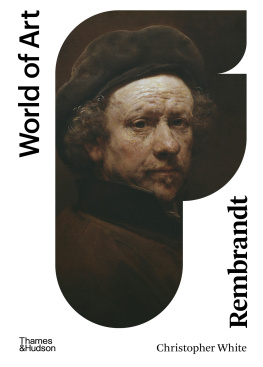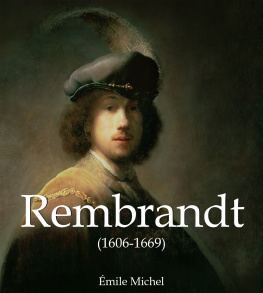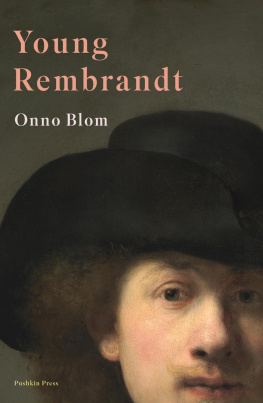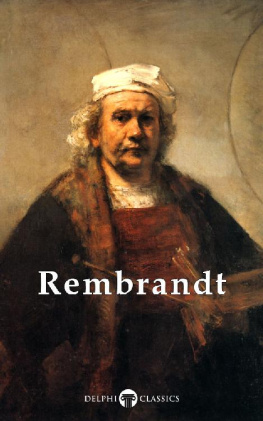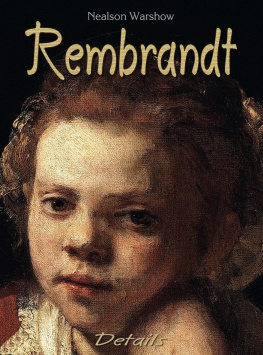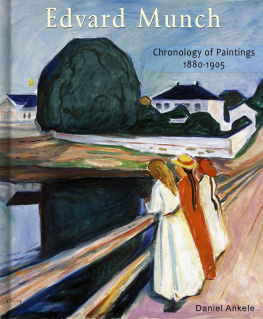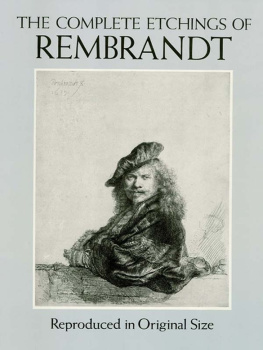Menpes - Rembrandt
Here you can read online Menpes - Rembrandt full text of the book (entire story) in english for free. Download pdf and epub, get meaning, cover and reviews about this ebook. year: 2011, publisher: Andrews UK, genre: Detective and thriller. Description of the work, (preface) as well as reviews are available. Best literature library LitArk.com created for fans of good reading and offers a wide selection of genres:
Romance novel
Science fiction
Adventure
Detective
Science
History
Home and family
Prose
Art
Politics
Computer
Non-fiction
Religion
Business
Children
Humor
Choose a favorite category and find really read worthwhile books. Enjoy immersion in the world of imagination, feel the emotions of the characters or learn something new for yourself, make an fascinating discovery.

- Book:Rembrandt
- Author:
- Publisher:Andrews UK
- Genre:
- Year:2011
- Rating:4 / 5
- Favourites:Add to favourites
- Your mark:
- 80
- 1
- 2
- 3
- 4
- 5
Rembrandt: summary, description and annotation
We offer to read an annotation, description, summary or preface (depends on what the author of the book "Rembrandt" wrote himself). If you haven't found the necessary information about the book — write in the comments, we will try to find it.
Rembrandt — read online for free the complete book (whole text) full work
Below is the text of the book, divided by pages. System saving the place of the last page read, allows you to conveniently read the book "Rembrandt" online for free, without having to search again every time where you left off. Put a bookmark, and you can go to the page where you finished reading at any time.
Font size:
Interval:
Bookmark:
Title Page
REMBRANDT
By
Mortimer Menpes
Publisher Information
This electronic version published in 2011 by
Andrews UK Limited
www.andrewsuk.com
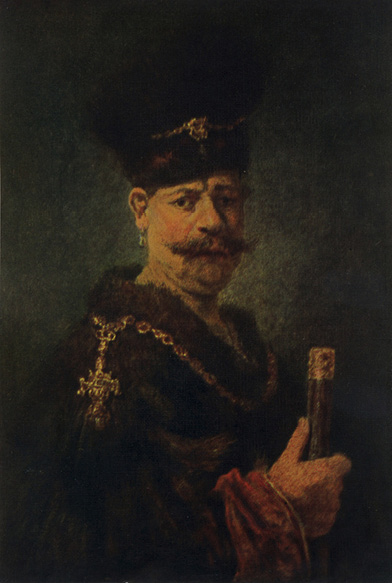
This edited version, including layout, typography, additions to text, cover artwork and other unique factors is copyright Andrews UK 2011. No part of this digital publication may be reproduced, stored in a retrieval system or transmitted in any form or by any means electronic, mechanical, photocopying, recording or otherwise without written permission of the copyright owner.
Preface
Although I am familiar with Rembrandts work, through photographs and black and white reproductions, I invariably experience a shock from the colour standpoint whenever I come in touch with one of his pictures. I was especially struck with that masterpiece of his at the Hermitage, called the Slav Prince , which, by the way, I am convinced is a portrait of himself; anyone who has had the idea suggested cannot doubt it for a moment; it is Rembrandts own face without question. The reproductions I have seen of this picture, and, in fact, of all Rembrandts works, are so poor and so unsatisfactory that I was determined, after my visit to St. Petersburg, to devise a means by which facsimile reproductions in colour of Rembrandts pictures could be set before the public. The black and white reproductions and the photographs I put on one side at once, because of the impossibility of suggesting colour thereby.
Rembrandt has been reproduced in photograph and photogravure, and by every mechanical process imaginable, but all such reproductions are not only disappointing, but wrong. The light and shade have never been given their true value, and as for colour, it has scarcely been attempted.
After many years of careful thought and consideration as to the best, or the only possible, manner of giving to those who love the master a work which should really be a genuine reproduction of his pictures, I have adapted and developed the modern process of colour printing, so as to bring it into sympathy with the subject. For the first time these masterpieces, with all the rich, deep colouring, can be in the possession of every one - in the possession of the connoisseur, who knows and loves the originals but can scarcely ever see them, and in that of the novice, who hardly knows the emotions familiar to those who have made a study of the great masters, but is desirous of learning.
At the Hermitage in St. Petersburg I was specially privileged - I was allowed to study these priceless works with the glass off and in moments of bright sunlight - to see those sweeps of rich colour, so full, so clear, so transparent, and broken in places, allowing the undertones to show through.
I myself have made copies of a hundred Rembrandts in order to understand more completely his method of work. And in copying these pictures certain qualities have been revealed to me which no one could possibly have learnt except by this means. Rembrandt worked more or less in two stages: first, by a carefully-painted monochrome, handled in such a way as to give texture as well as drawing, and in which the masses of light and shade are defined in a masterly manner; second, by putting on the rich, golden colour - mostly in the form of glazes, but with a full brush. This method of handling glazes over monochrome has given a gem-like quality to Rembrandts work, so much so that you might cut out any square inch from any portion of his pictures and wear it as a jewel. And in all his paintings there is the same decorative quality that I have before alluded to: any picture by Rembrandt arrests you as a decorative patch - the grouping and design, and, above all, the balance of light and shade, are perfect.
MORTIMER MENPES
July 1905
The Recoverers of Rembrandt
Imagine a man, a citizen of London, healthy, middle-aged, successful in business, whose interest in golf is as keen, according to his lights and limitations, as the absorption of Rembrandt in art. Suppose this citizen, having one day a loose half-hour of time to fill in the neighbourhood of South Kensington, remembers the articles he has skimmed in the papers about the Constantine Ionides bequest: suppose he strolls into the Museum and asks his way of a patient policeman to the Ionides collection. Suppose he stands before the revolving frame of Rembrandt etchings, idly pushing from right to left the varied creations of the master, would he be charmed? would his imagination be stirred? Perhaps so: perhaps not. Perhaps, being a man of importance in the city, knowing the markets, his eye-brows would unconsciously elevate themselves, and his lips shape into the position that produces the polite movement of astonishment, if someone whispered in his ear - At the Holford sale the Hundred Guilder Print fetched 1750, and Ephraim Bonus with the Black Ring , 1950; and M. Edmund de Rothschild paid 1160 for a first state of the Dr. A. Tholinx . Those figures might stimulate his curiosity, but being, as I have said, a golfer, his interest in Rembrandt would certainly receive a quick impulse when he observed in the revolving frame the etching No. 683, 2-7/8 inches wide, 5-1/8 inches high, called The Sport of Kolef or Golf .
Is it fantastical to assume that his interest in Rembrandt dated from that little golf etching? Great events ofttimes spring from small causes. We will follow the Rembrandtish adventures of this citizen of London, and golfer. Suppose that on his homeward way from the Museum he stopped at a book shop and bought M. Auguste Brals small, accomplished book on Rembrandt. Having read it, and being a man of leisure, means, and grip, he naturally invested one guinea in the monumental tome of M. mile Michel, Member of the Institute of France - that mine of learning about Rembrandt in which all modern writers on the master delve. Astonishment would be his companion while reading its packed pages, also while turning the leaves of Luvre de Rembrandt , dcrit et comment, par M. Charles Blanc, de lAcademie Franaise. This sumptuous folio he picked up second hand and conveyed home in a cab, because it was too heavy to carry. Now he is fairly started on his journey through the Rembrandt country, and as he pursues his way, what is the emotion that dominates him? Amazement, I think.
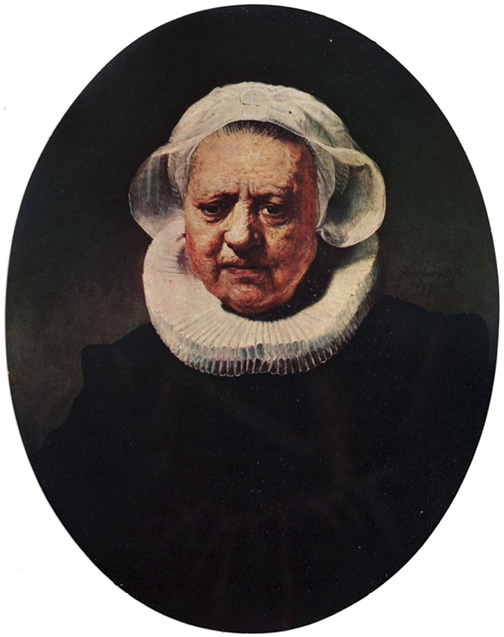
Portrait of a Woman of Eighty-Three
1634
National Gallery, London
Let me illustrate the extent and character of his amazement by describing a little incident that happened to him during a days golfing at a seaside course on the following Saturday.
The approach to the sixteenth green is undeniably sporting. Across the course hangs the shoulder of a hill, and from the fastnesses of the hill a brook gushes down to the sea through the boulders that bestrew its banks. Obliged to wait until the preceding couple had holed out, our citizen and golfer amused himself by upturning one of the great lichen-stained boulders. He gazed into the dank pit thus disclosed to his eyes, and half drew back dismayed at the extraordinary activity of insect life that was revealed. It was so sudden, so unexpected. Beneath that grey and solemn boulder that Time and man accepted as a freehold tenant of the world, that our citizen had seen and passed a hundred times, a population of experts were working, their deeds unseen by the wayfarer. Now what is the meaning of this little story? How did the discovery of that horde of capable experts strike the imagination of our golfer? The boulder was Rembrandt. The busy insects were the learned and patient students working quietly on his behalf - his discoverers and recoverers. He had passed that boulder a hundred times, his eyes had rested cursorily upon it as often as the name of Rembrandt in book or newspaper had met his indifferent gaze. Now he had raised the boulder, as he had lifted the Rembrandt curtain, and lo! behind the curtain, as beneath the boulder, he had discovered life miraculously active.
Next pageFont size:
Interval:
Bookmark:
Similar books «Rembrandt»
Look at similar books to Rembrandt. We have selected literature similar in name and meaning in the hope of providing readers with more options to find new, interesting, not yet read works.
Discussion, reviews of the book Rembrandt and just readers' own opinions. Leave your comments, write what you think about the work, its meaning or the main characters. Specify what exactly you liked and what you didn't like, and why you think so.

